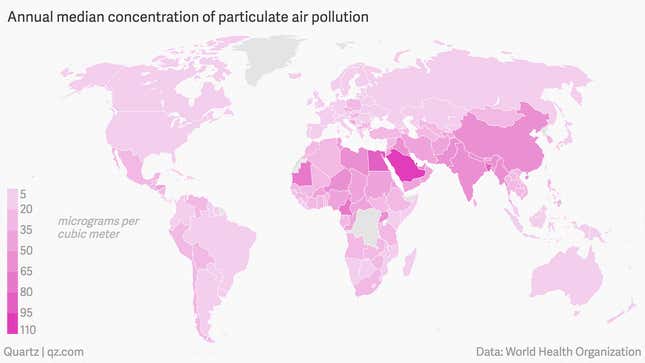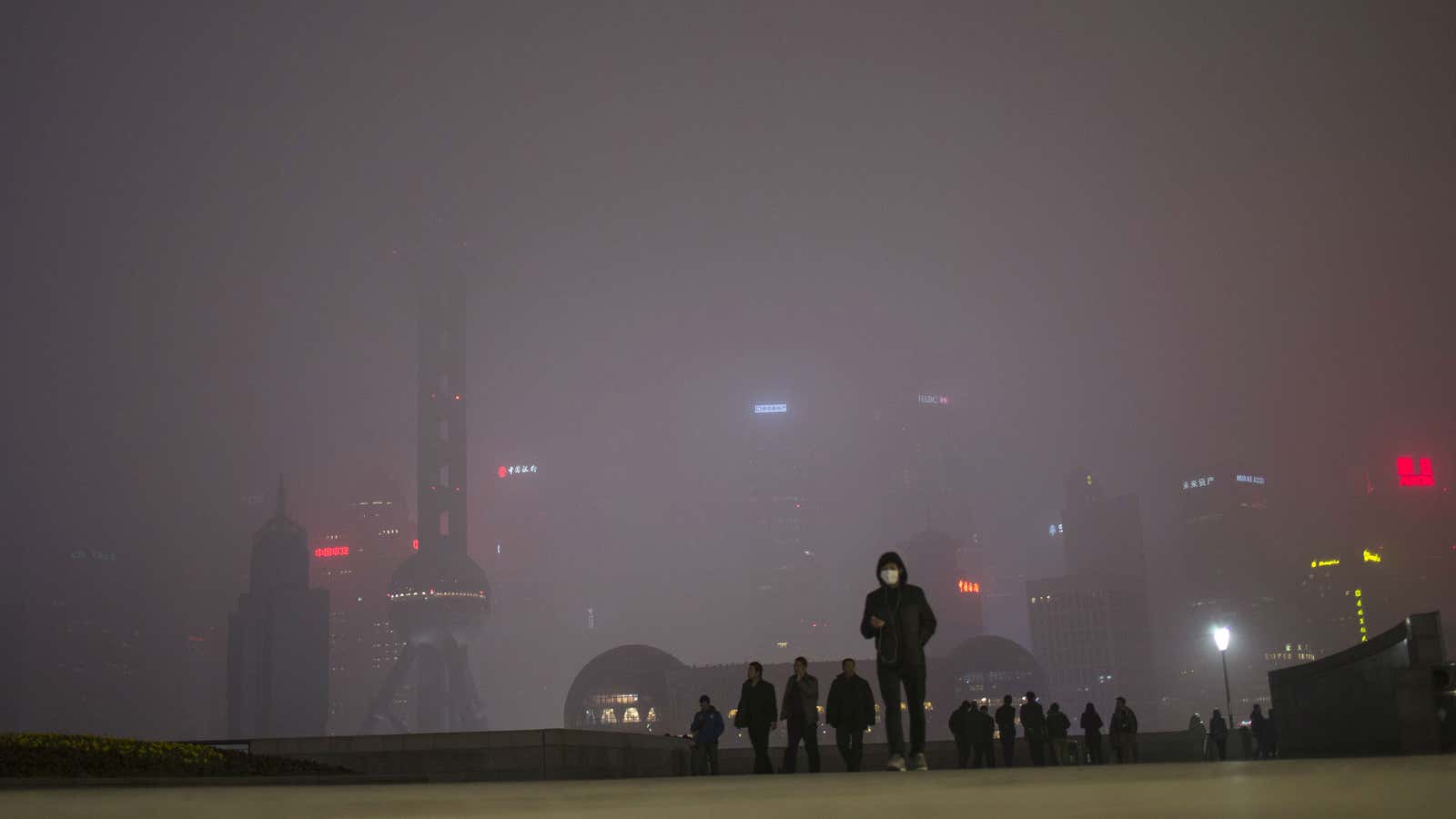Air pollution from industrial activity isn’t just an environmental concern—it’s a major public health problem, too.
In a report (pdf) released Tuesday (Sept. 27), the World Health Organization (WHO) found that 92% of the population breathes air with unhealthy levels of pollutants. WHO collected air quality data from 3,000 locations across the globe and looked for concentrations of fine particulate matter, including sulfates, nitrates, mineral dust, and black carbon, which are less than 2.5 micrometers in diameter—about 1/1000 of a millimeter, or the width of a credit card. Both indoors and outdoors, these particles work their way into the lungs when we breathe, and can cause cardiovascular disease like lung cancer, stroke, and chronic obstructive pulmonary disease.
According to the report, one in every nine deaths per year—about six million total—can be attributed to breathing in unhealthy concentrations of these particles. The map below shows the median levels of air pollution in entire countries. Of course, within a country there can be a wide range of air pollution levels from location to location, and these measurements tended to be much higher in cities and lower in rural areas. ”Safe” levels of fine particulate matter, according to WHO, are about 10 micrograms of particles per cubic meter, but most countries far surpassed those levels.

In 2015, reducing health consequences by air pollution was added to the list of sustainable development goals. The table below shows all the median levels of particulate matter in each country where the WHO collected data.
